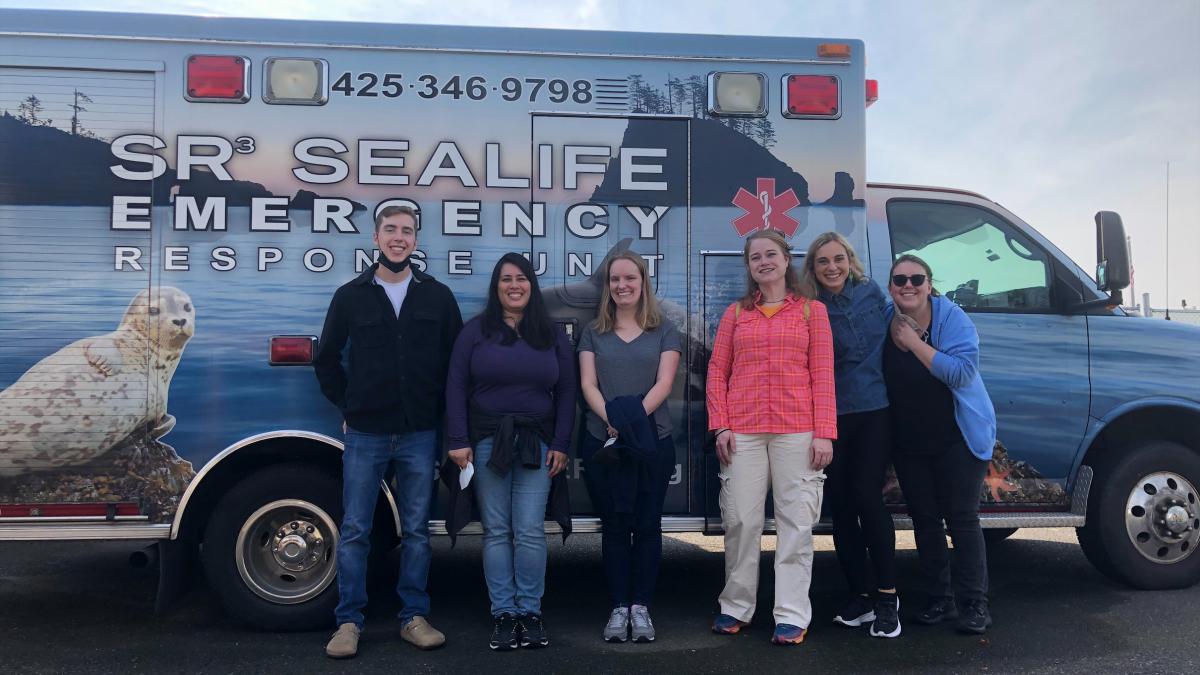At the marine mammal hospital Sealife Response, Rehab and Research (SR3) in Des Moines, Washington, this fall has been a busy one: the facility has 18 seal pups in various stages of rehabilitation.
In October, graduate student trainees from the Northwest Center for Occupational Health and Safety (NWCOHS) toured SR3 to understand how their skills and training would apply to ensuring health and safety at a marine mammal hospital. They included trainees in Occupational Health at the Human-Animal Interface, Occupational Health Nursing and Industrial Hygiene.
Trainees observed the pups and learned about the complexities of maintaining treatment pools, from the perspectives of both animal and human public health. They also visited the surgery and medical care room and learned how providers care for the various marine mammals at SR3.
A breadth of occupational health hazards
“As an industrial hygienist, it was illuminating to see examples of all six types of hazards in one facility,” said Asheton Gilbertson, an MS student in Occupational Hygiene in the UW Department of Environmental & Occupational Health Sciences (DEOHS), referring to biological, chemical, physical, safety, ergonomic and psychosocial hazards.
SR3 experiences risks common to workplaces, such as ergonomic concerns, while also having “unique health concerns that come from working with animals,” said Hilary McLeland-Wieser, a DEOHS PhD student in One Health. “I hadn’t considered that when working with seals, bites are a concern.”
Interdisciplinary interactions
The experience led Gilbertson to reflect on the interdisciplinary nature of work at SR3 and similar workplaces.
“Health and safety is so much more than ventilation calculations or corrective action plans. It is working across disciplines to fully understand and address workers’ needs,” she said. “Seeking out new perspectives, actively listening and asking questions is essential to promoting collaboration and coordination.”
Vickie Ramirez, center manager and senior research coordinator of the UW Center for One Health Research, facilitated the tour.
On the drive back to campus, she commented that “industrial hygiene students were talking to nursing students about different aspects of what they saw at the Center [SR3] from their perspectives…the experience gave them the opportunity to see how they can work together!”
Learn more about occupational health in a marine mammal setting in our Q&A with Lily Myers, a NWCOHS and DEOHS MS alum in Occupational Hygiene who interned at SR3.
Adapted from the full blog post here.




